Spring-Summer 2023 Haute Couture Show
Online on January 23rd at 3.00 p.m. (GMT+1)
For Maria Grazia Chiuri, each haute couture défilé is an opportunity to explore the complex thought processes connected to a garment constructed for a body. The couture garment is a body-garment. A body-home. A body-manifesto.
This Dior spring-summer 2023 collection is guided by Joséphine Baker, the African-American singer and dancer who arrived from the United States in the mid 1920s to the cosmopolitan city of Paris, which was a dream destination for artists, writers and fashion designers. A glamorous icon, she embodies the modernity of those years, the transgression of stereotypes and prejudices, the mixing of cultures and shared experiences that notably animated the vibrant world of cabaret. Having acquired French citizenship, she was acclaimed by post-war Europe and performed at the Strand Theatre and Carnegie Hall, New York, dressed in French fashion, such as the Dior creations that crowned her charisma and success.
The photographs of Joséphine Baker, whose energy is emphasized by their black and white tonality, compose a form of sartorial biography (capturing her as a dancer, entertainer, member of the French Resistance, civil rights activist for the African-Americans, humanist and universal benefactress), the exemplary story of a pioneer, a role-model. The cozy, intimate dressing room that precedes her entrance on stage is evoked by a series of coats, reminiscent of the bathrobe, which conceals and protects. Made of light velvet, crumpled and dynamic, or quilted, they open onto pieces of light satin underwear that transform into protagonists themselves, their powdered hues and black providing a contemporary interpretation of 1950s classics.
The clothes glide over the body and caress it. In silk, in velvet, often with a creased effect, a syncopated rhythm, breathing vitality into the fabric. The embroidery is delicate. Tiny silver studs and sequins occupy the space and absorb the runway lights to reflect them onto the audience. Fringes in shades of silver and gold accompany and magnify the choreography of the movements sketched by the body. The suits and coats pay tribute to the masculine fabrics dear to Monsieur Dior. The length, always above the ankle, reveals shoes with heels and imposing soles.
The show’s staging by African-American artist Mickalene Thomas, celebrates black and mixed-race women, like Joséphine Baker, who evolved into powerful figureheads by breaking racial barriers and going against the grain. She unveils the deep meaning of this collection and shakes up the vision of haute couture, the essence of fashion that can become a radical gesture of awareness of its own value and strength.
DIALOGUE OF THE ARTS
For the staging of the Dior haute couture spring-summer 2023 show, Maria Grazia Chiuri has woven a new creative dialogue with Mickalene Thomas, an emblematic African-American artist, born in 1971, with whom she had previously collaborated on the Dior cruise 2020 collection, unveiled in Marrakech, Morocco. On that occasion, the Creative Director of Dior women’ s lines had given her carte blanche to reinterpret the iconic New Look silhouette.
FROM THE BACKSTAGE TO THE STAGE
A tribute to Joséphine Baker and the highly creative Paris of the 1920s, the looks of the Dior spring-summer 2023 haute couture show oscillate between tailoring with a masculine edge and scintillating evening wear. The silhouette is slimmed down, with straight, irresistibly architectural lines in a plural geometry reinforced by the pleats of skirts distinguished by captivating textured relief. An interplay of embroidery and mesh brings ultimate finesse and lightness to tops and dresses. Fringes, signature details of this collection, breathe life into the different pieces thanks to their airy motion. Continuing this couture choreography, metallic fabrics with an iridescent sheen, delicately burnished, add a touch of radiant light, while those that are subtly crushed punctuate the models with an audacious twist. From stage to backstage, undergarments are transformed into new objects of desire.
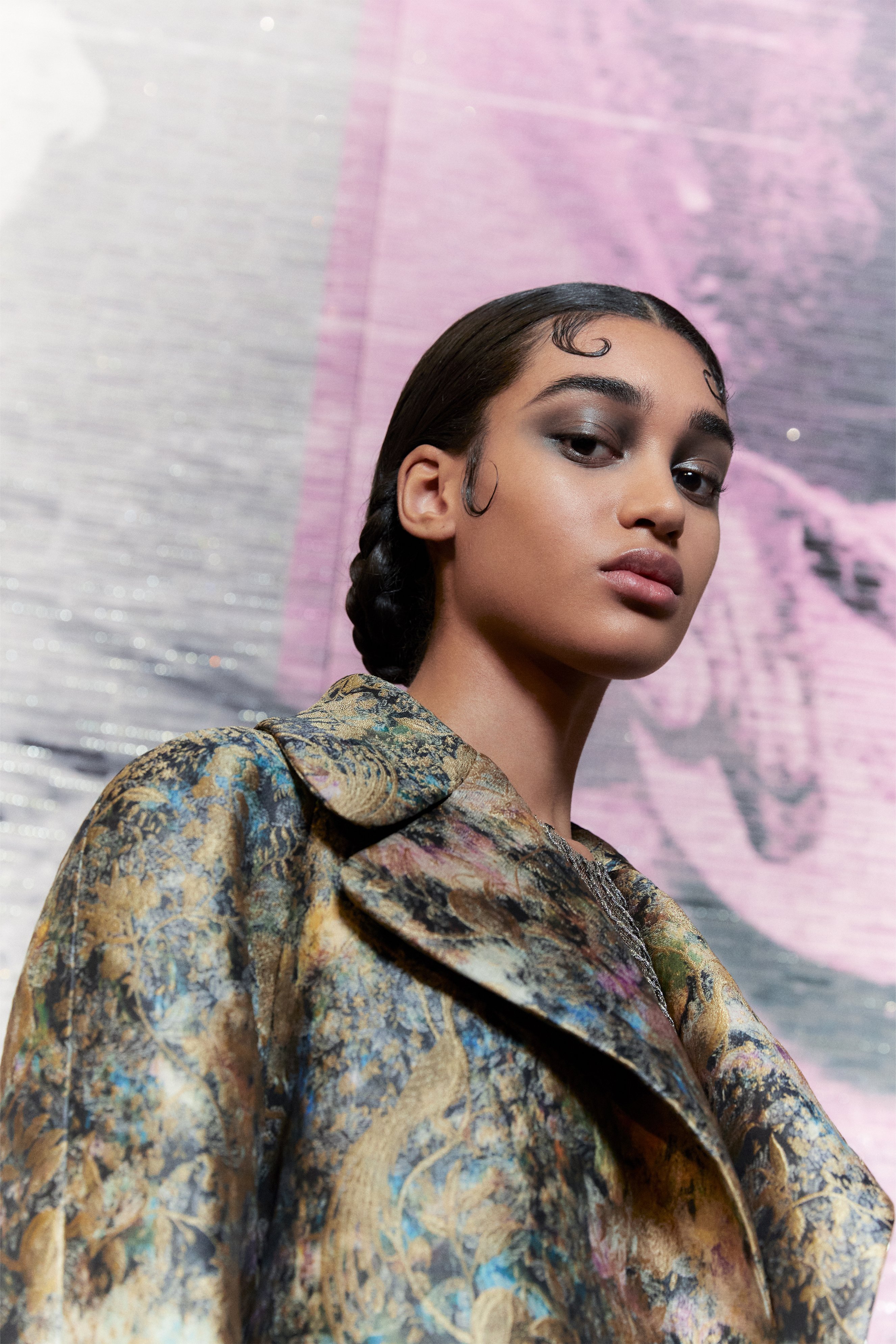
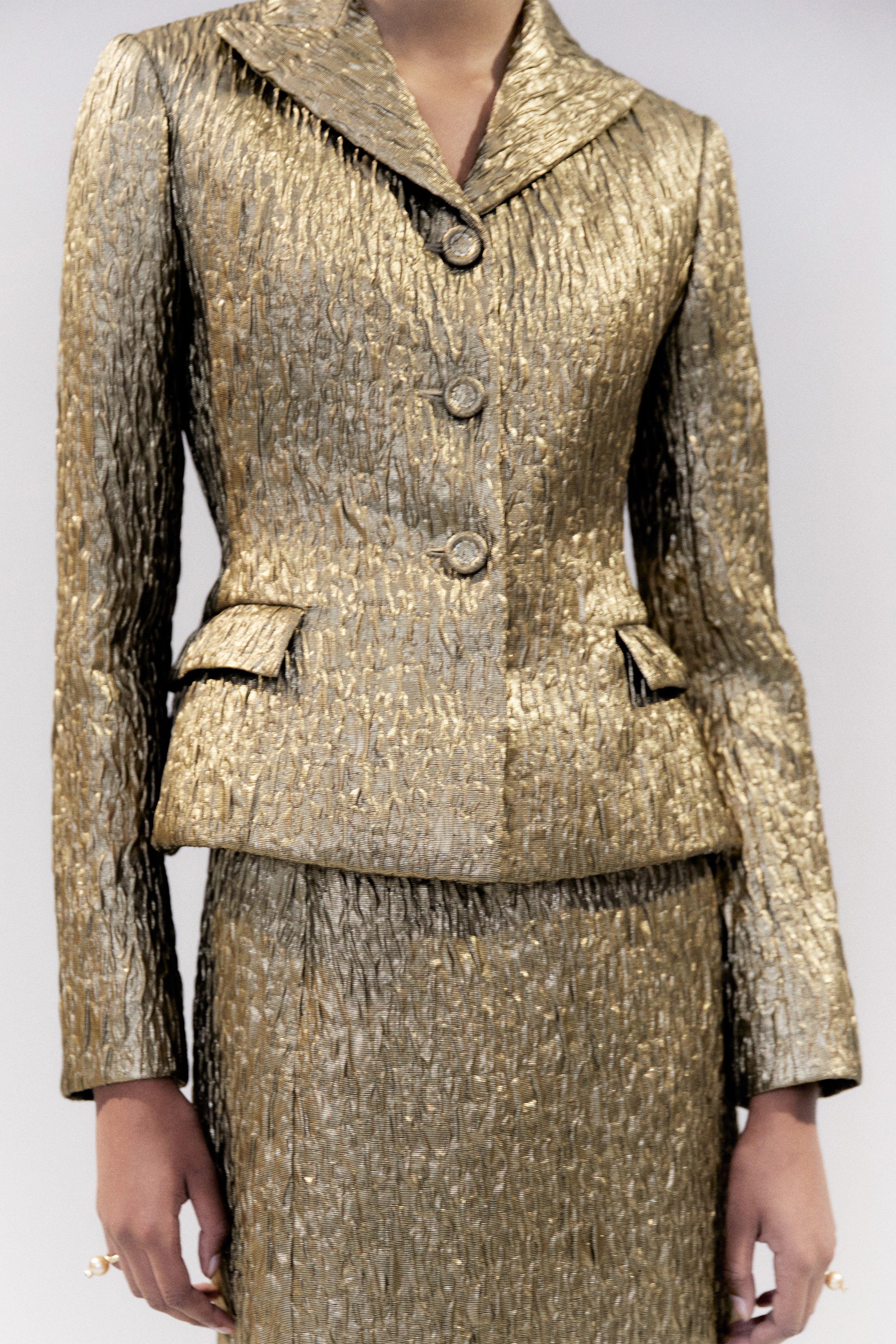
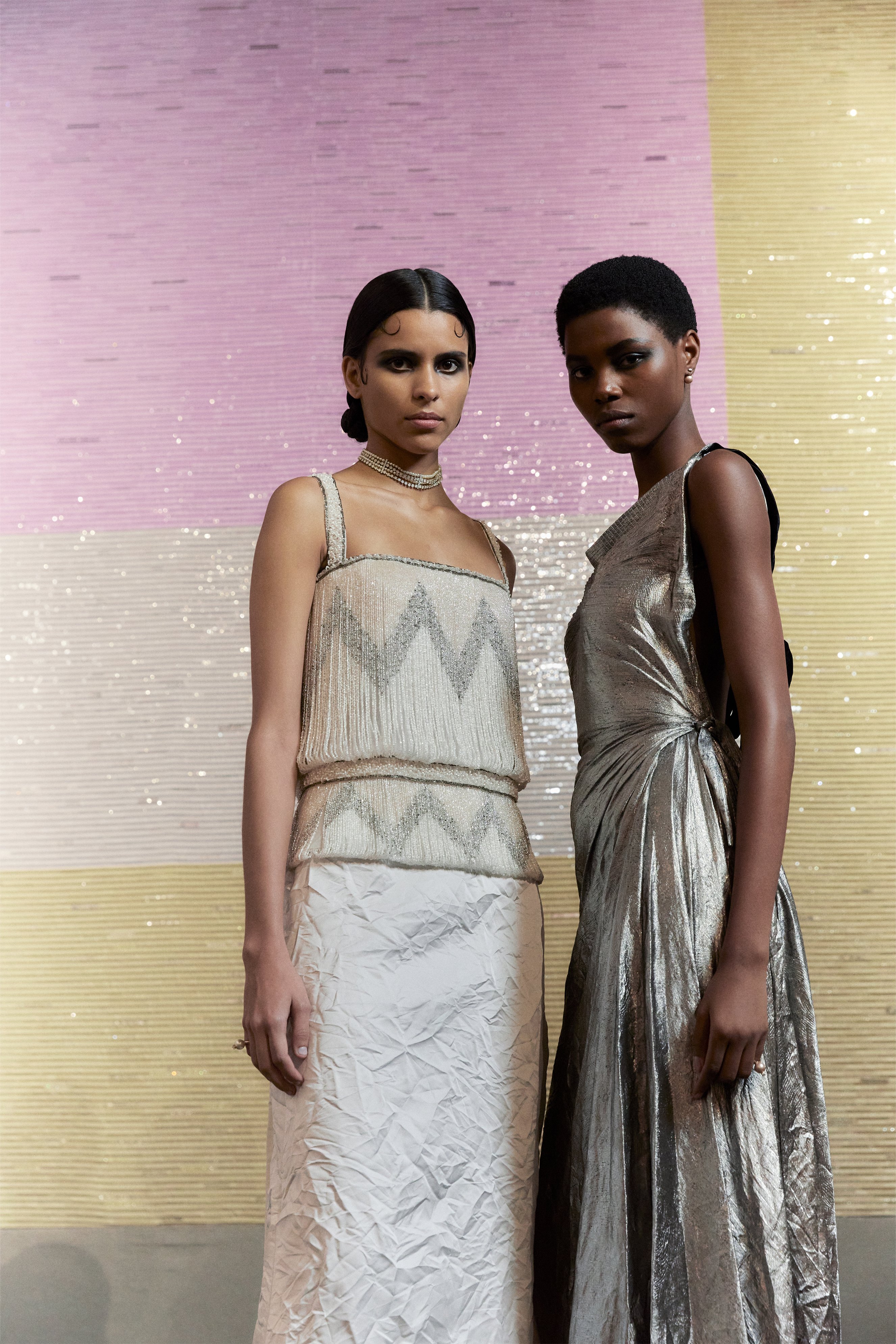
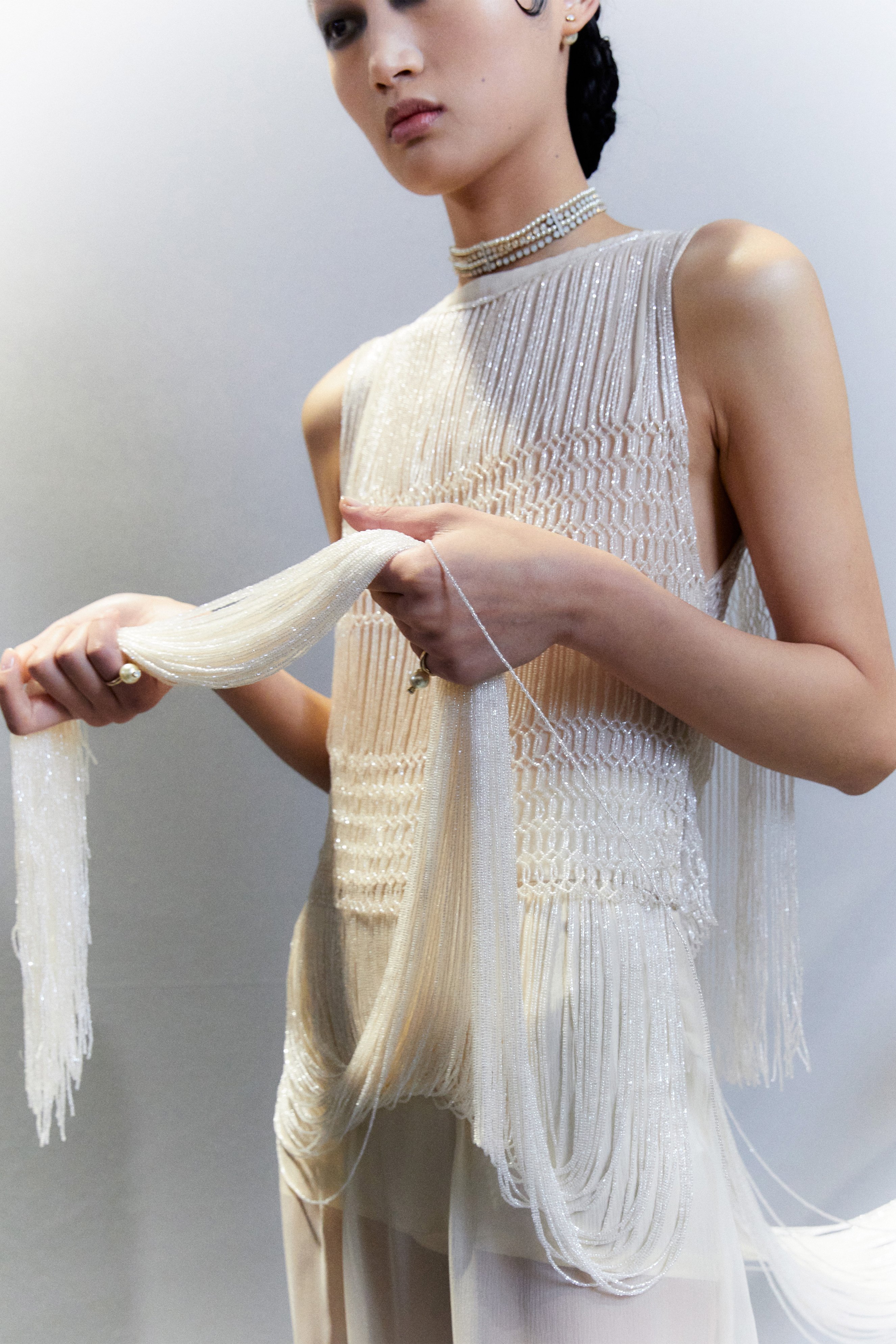
CABARET SPIRIT
Gracefully completing the silhouettes, accessories celebrate the spirit of 1920s cabarets. An ode to the art of detail dear to the House, wedge-heeled shoes are dressed in delicately embroidered silk velvet, an expression of the virtuoso savoir-faire of the Dior Ateliers. The jewelry, irresistibly delicate and refined, is adorned with beads and diamante, reflecting the bold style of the era. A poetic reinvention, a look pared down to striking essentials.
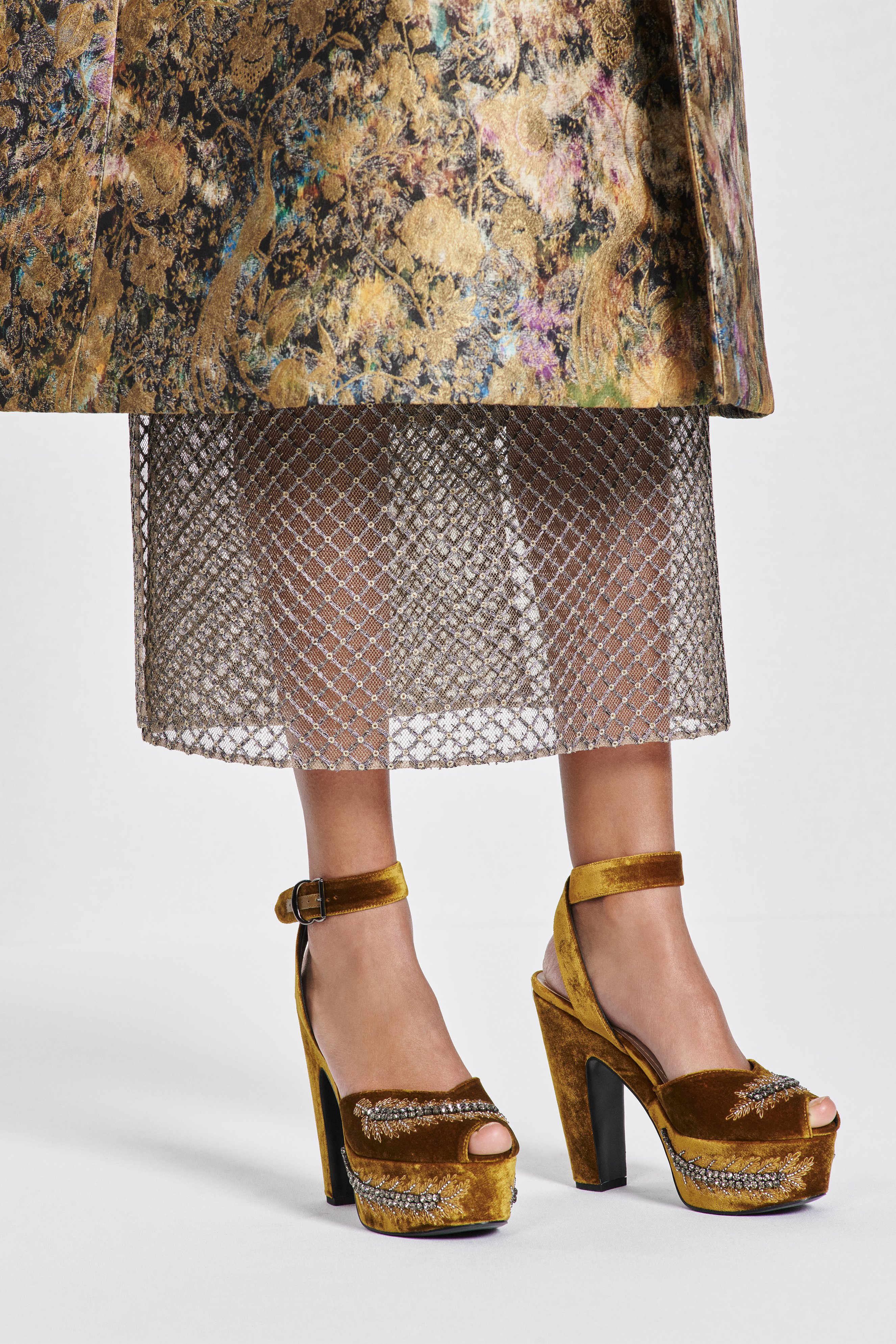


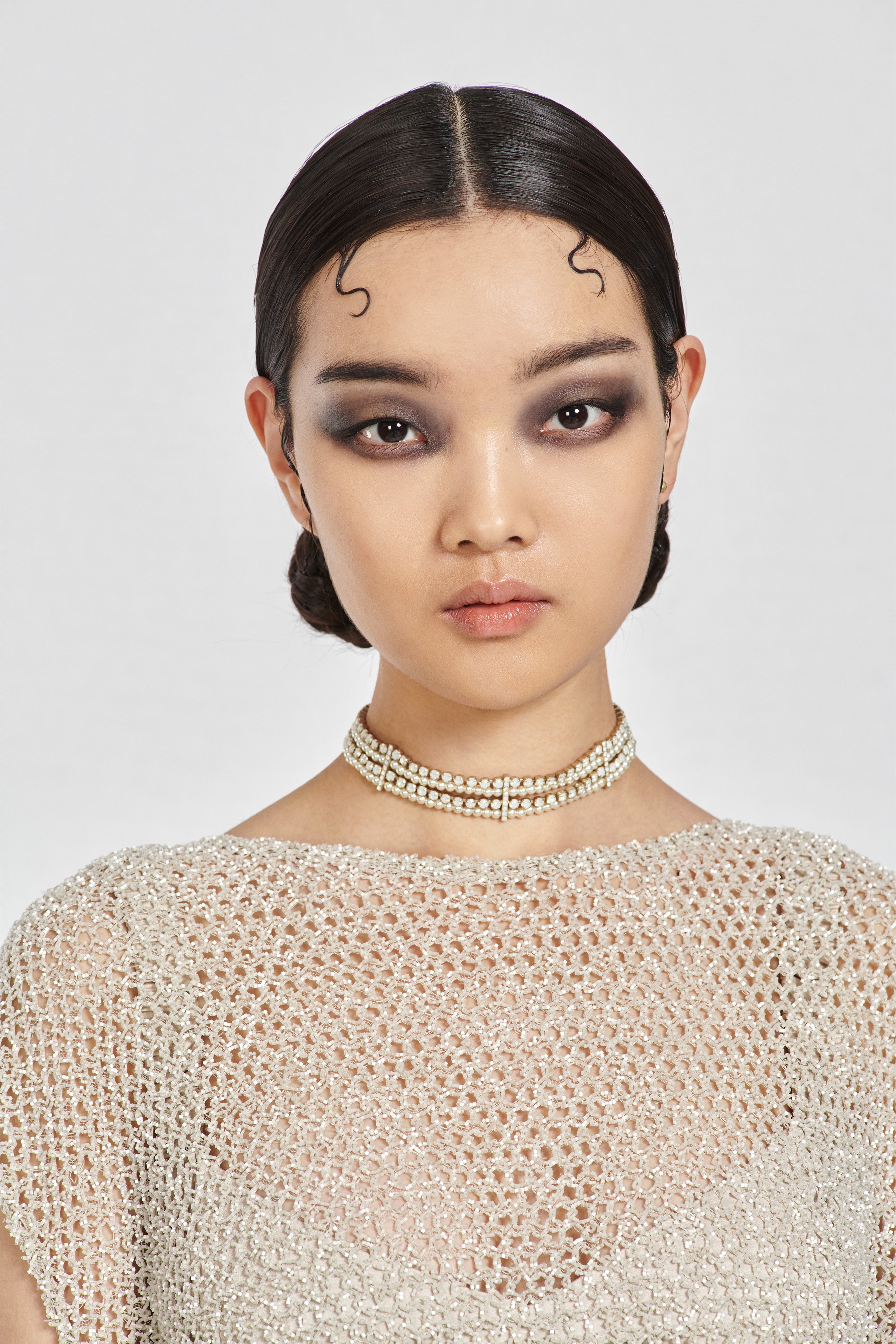
ART OF THE DETAIL
Inhabited by absolute elegance, the silhouettes of the Dior spring summer 2023 haute couture line come to life thanks to multiple, virtuoso savoir-faire. More essential than ever, the beauty of artisanal gestures is revealed through majestic pleats, delicate embroidery and entrancing, shimmering fabrics.
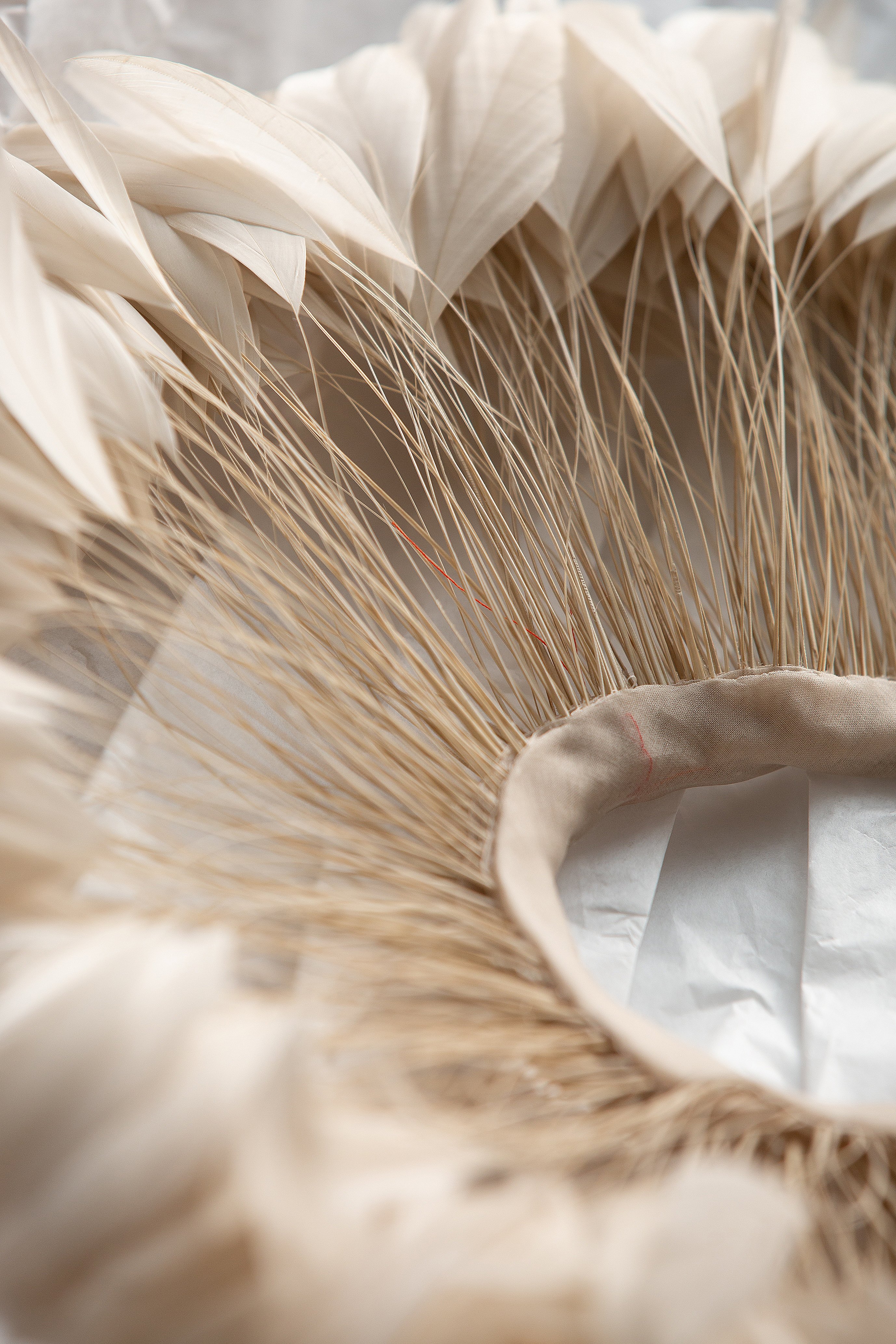
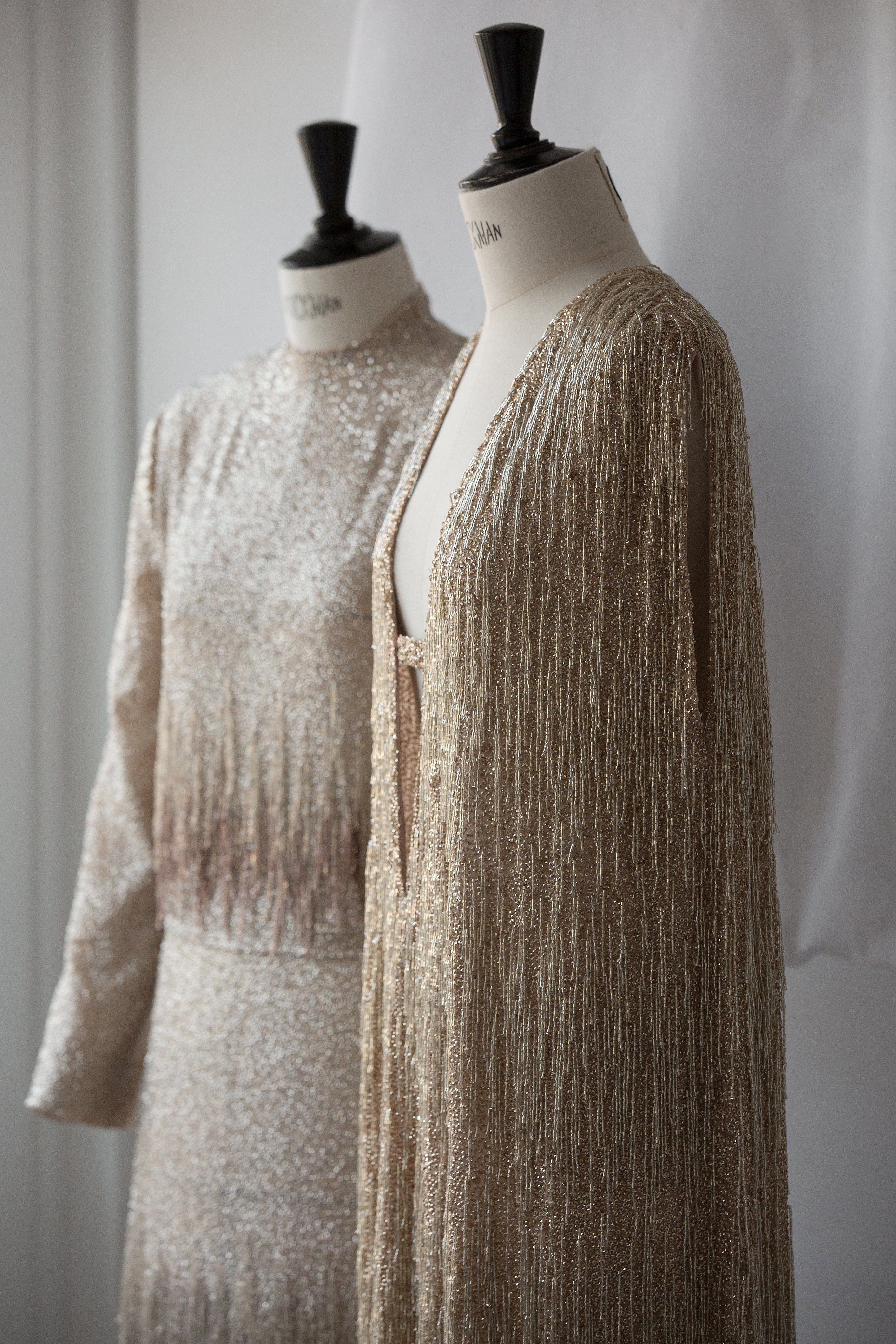

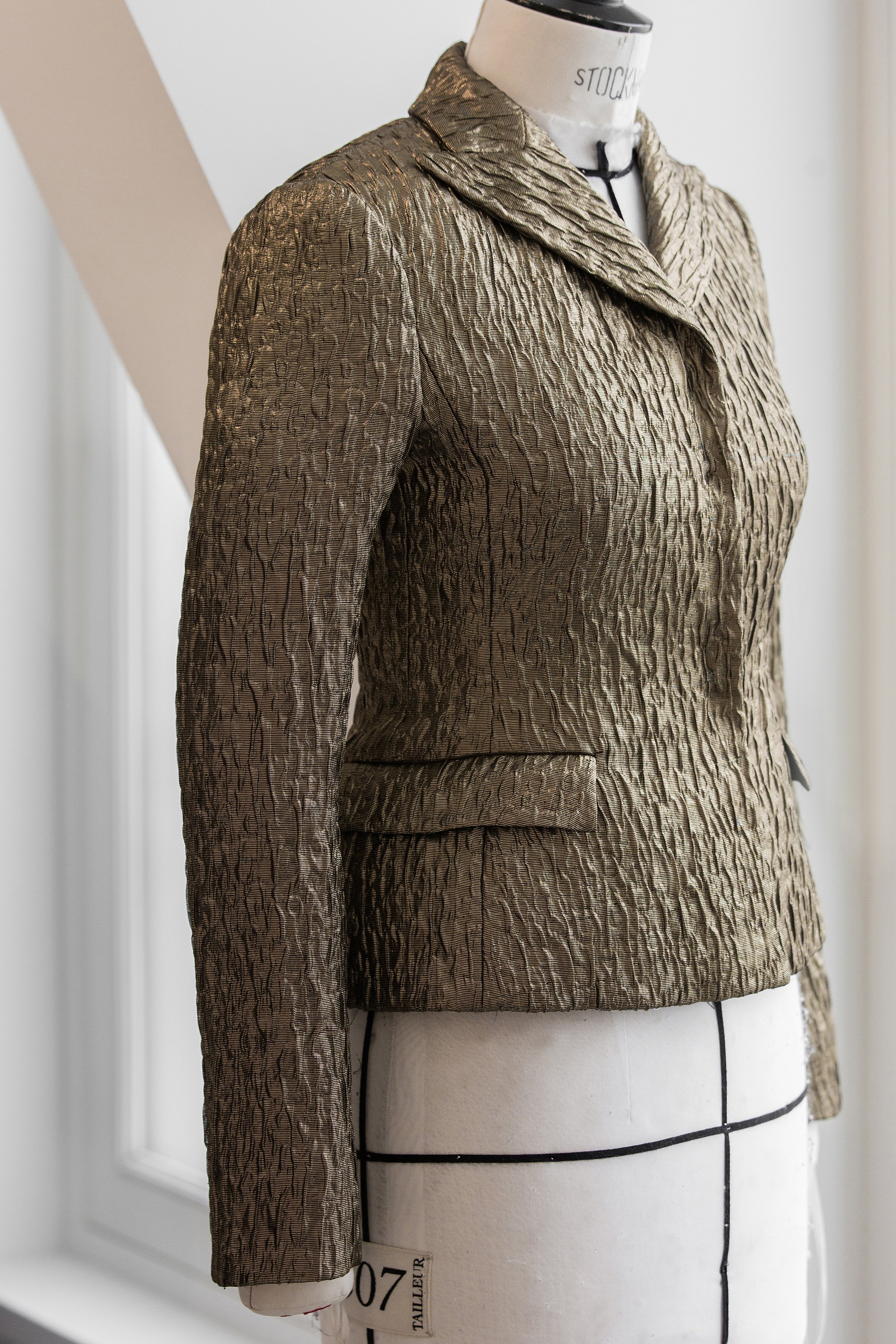
Noir est beau (Dorothy Dandridge)
Mickalene Thomas (œuvre)
Chanakya (broderies)
Dorothy Dandridge
Evening Standard/Hulton Archives/Getty Image (photo 1)
Bettman/Getty Image (photo 2)
Noir est beau (Eartha Kitt)
Mickalene Thomas (œuvre)
Chanakya (broderies)
Eartha Kitt
Kenn Duncan/© The New York Public Library/Art Resource, NY (photo 1)
Michael Ochs Archives/Getty Images (photo 2)
Noir est beau (Josephine Premice)
Mickalene Thomas (œuvre)
Chanakya (broderies)
Josephine Premice
Bettman/Getty Image (photo)
Noir est beau (Nina Simone)
Mickalene Thomas (œuvre)
Chanakya (broderies)
Nina Simone
Hulton Archive/Getty Image (photo 1)
Michael Ochs Archives/Getty Image (photo 2)
Noir est beau (Diahann Carroll)
Mickalene Thomas
Chanakya (broderies)
Diahann Carroll
Peter Basch, Bash LLC (photo 2)
Noir est beau (Hazel Scott)
Mickalene Thomas (œuvre)
Chanakya (broderies)
Hazel Scott
Michael Ochs Archives/Getty Image (photo 1)
Johnson Publishing Company Archive. Courtesy J. Paul Getty Trust and Smithsonian National Museum of African American History and Culture.
Made possible by the Ford Foundation, J. Paul Getty Trust, John D. and Catherine T. MacArthur Foundation, The Andrew W. Mellon Foundation, and Smithsonian Institution (photo 2)
Noir est beau (Diahann Carroll)
Mickalene Thomas
Chanakya (broderies)
Diahann Carroll
Peter Basch, Bash LLC (photo 2)
Noir est beau (Hazel Scott)
Mickalene Thomas (œuvre)
Chanakya (broderies)
Hazel Scott
Michael Ochs Archives/Getty Image (photo 1)
Johnson Publishing Company Archive. Courtesy J. Paul Getty Trust and Smithsonian National Museum of African American History and Culture.
Made possible by the Ford Foundation, J. Paul Getty Trust, John D. and Catherine T. MacArthur Foundation, The Andrew W. Mellon Foundation, and Smithsonian Institution (photo 2)
Noir est beau (Donyale Luna)
Mickalene Thomas (œuvre)
Chanakya (broderies)
Donyale Luna
Estate Charlotte March/Falckenberg Collection (photo 1)
Noir est beau (Marpessa Dawn)
Michalene Thomas (œuvre)
Chanakya (broderies)
Marpessa Dawn
Dispat Films/Tupan Filmes/Photo12
Courtesy of Tigon Film Distributors Limited
Noir est beau (Helen Williams)
Mickalene Thomas (œuvre)
Chanakya (broderies)
Helen Williams
Noir est beau (Lena Horne)
Mickalene Thomas (œuvre)
Chanakya (broderies)
Lena Horne
Corbis/Getty Image (photo)
Noir est beau (Naomi Sims)
Mickalene Thomas (œuvre)
Chanakya (broderies)
Naomi Sims
Photo by Dustin Pittman (photo 2)
Noir est beau (Ophelia DeVore)
Mickalene Thomas (œuvre)
Chanakya (broderies)
Ophelia Devore
Noir est beau (Joséphine Baker 1)
Mickalene Thomas (œuvre)
Chanakya (broderies)
Joséphine Baker
Hulton Archive/Getty Image (photo)
Noir est beau (Joséphine Baker 2)
Mickalene Thomas (œuvre)
Chanakya (broderies)
Joséphine Baker
Hulton Archive/Getty Image (photo)
Noir est beau (Joséphine Baker 3)
Mickalene Thomas (œuvre)
Chanakya (broderies)
Joséphine Baker
Gamma-Keystone/Getty Image